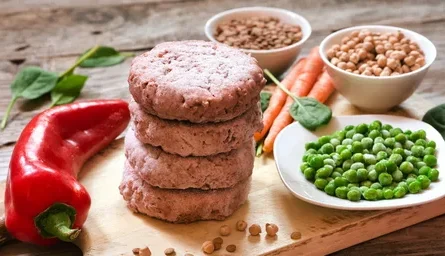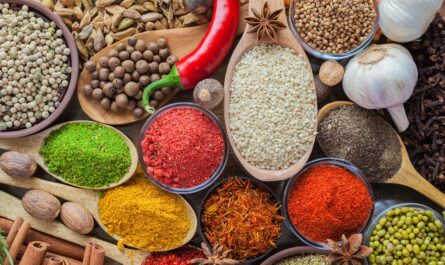Introduction to Sourdough
Sourdough is a type of bread that is made using naturally fermented dough containing wild yeasts and lactobacilli bacteria. This type of bread dates back thousands of years and has seen a recent resurgence in popularity due to its distinctive taste and various health benefits. In this article, we will explore the history and process of sourdough bread, along with its nutritional benefits compared to regular bread.
History of Sourdough Bread
Some of the earliest evidence of sourdough bread dates back to ancient Egypt around 1100 BC. However, it is believed that sourdough likely originated hundreds or even thousands of years earlier. In those early days, sourdough was essential for bread making before commercial yeast was widely available. Home bakers would keep a sourdough “starter” of wild yeasts and bacteria alive by feeding it regularly with flour and water. This starter would then be used to leaven new bread.
Sourdough made its way across Europe and was an important staple in many cultures for centuries. As people migrated to new lands, they brought their sourdough starter cultures with them to establish bread baking traditions in other parts of the world. Some significant developments in sourdough history include its proliferation in San Francisco during the gold rush era, when many immigrants brought their sourdough starter cultures to establish bakeries. Today, sourdough cultures are still being passed down through generations in certain families and communities.
The Sourdough Process
The first step to making sourdough bread involves creating and maintaining the sourdough starter. This contains a blend of wild yeast and lactobacilli bacteria that have symbiotically balanced to produce CO2 bubbles and lactic acid, giving sourdough its signature flavor and texture. Starters require regular “feedings” of flour and water to keep the culture actively fermenting.
Once an established starter is attained, it can be used to leaven new dough. A portion of starter is added to fresh flour and water, along with salt for flavor. The proteins in the flour link together in long strands as the yeast ferments, creating the structure we recognize as bread. Initially, the dough will be wet and require time for the microscopic air pockets created by fermentation to take shape and strengthen the matrix.
After one or more rests and folding sessions allowing this network of air pockets to develop, the dough is shaped and placed in the final rising phase before baking. Entering a very hot oven causes the air pockets to rapidly expand, resulting in the light, airy texture of sourdough bread. The long fermentation period and preservative qualities of the sourdough culture produce a bread with superior flavor, nutrition, and shelf life compared to non-sourdough varieties.
Nutritional Benefits of Sourdough Bread
The lengthy natural fermentation process that distinguishes sourdough from traditional bread has several health advantages:
– Improved digestion: The lactic acid produced during fermentation partially predigests proteins and carbohydrates in the bread, making them easier for the body to break down and absorb nutrients from. This can alleviate digestive issues like gluten intolerance for many individuals.
– Probiotic qualities: The lactobacilli bacteria in a sourdough starter have probiotic properties that deliver live microorganisms beneficial for gut and immune health when consumed. Studies have found sourdough bread to positively influence the balance of microflora in the large intestine.
– Increased nutrients: Long, slow fermentation allows for maximum nutrient development and bioavailability. Sourdough contains more vitamins, minerals, and antioxidants compared to bread made with commercial yeast which has a shorter fermentation window.
– Lower glycemic impact: Sourdough’s partially predigested carbohydrates and higher nutrient density cause it to break down more slowly once eaten. This moderates blood sugar spikes compared to regular breads with a higher glycemic index.
Craft Sourdough Bakeries
In recent times, there has been resurgent interest in artisanal sourdough bread baking, evidenced by the proliferation of local and niche bakeries focusing on this tradition. Many source heirloom starter cultures and develop rustic sourdough varieties using time-honored techniques:
– At Le Panier bakery in Los Angeles, baker Alexandre Weber sources ancient wheat varieties and utilizes a 120+ year old Normandy starter culture to craft baguettes and boules with a delicate crumb structure and tangy levain flavor profile.
– At Brother Juniper’s Bakery in Oakland, founder Judith Martínez uses her family’s decades-old starter culture from Oaxaca, Mexico to bake hearty sourdoughs like tasty pan de muerto and panque for the local Latino community.
– At Salt & Straw ice cream shops nationwide, co-founder Kim and Tyler Malek have collaborated with different artisan bakers to develop one-of-a-kind frozen dessert flavors using locally sourced seasonal fruits and signature craft sourdough bread crumbs, waffles, or brioche.
The rising popularity of such specialized sourdough bakeries points to consumers seeking out the gustatory pleasures and perceived health attributes of traditionally fermented breads. With a taste, texture and nutritional profile unrivaled by commercial breads, sourdough’s legacy will likely endure for many centuries to come.
*Note:
1. Source: Coherent Market Insights, Public sources, Desk research
2. We have leveraged AI tools to mine information and compile it



